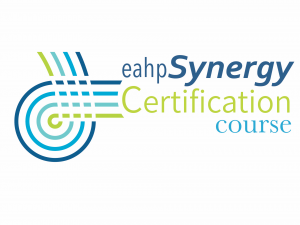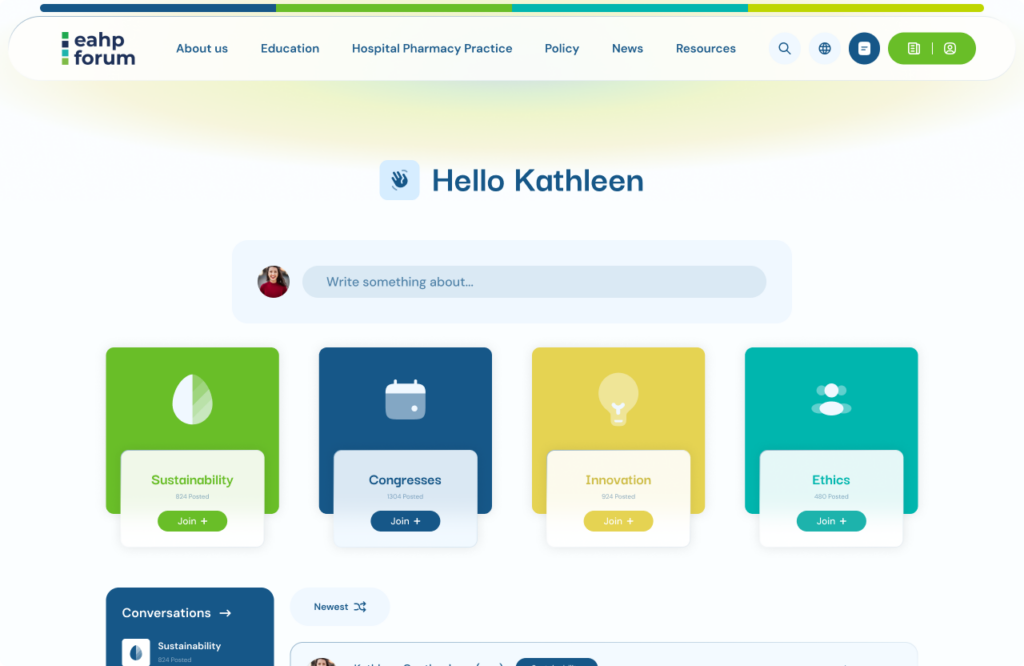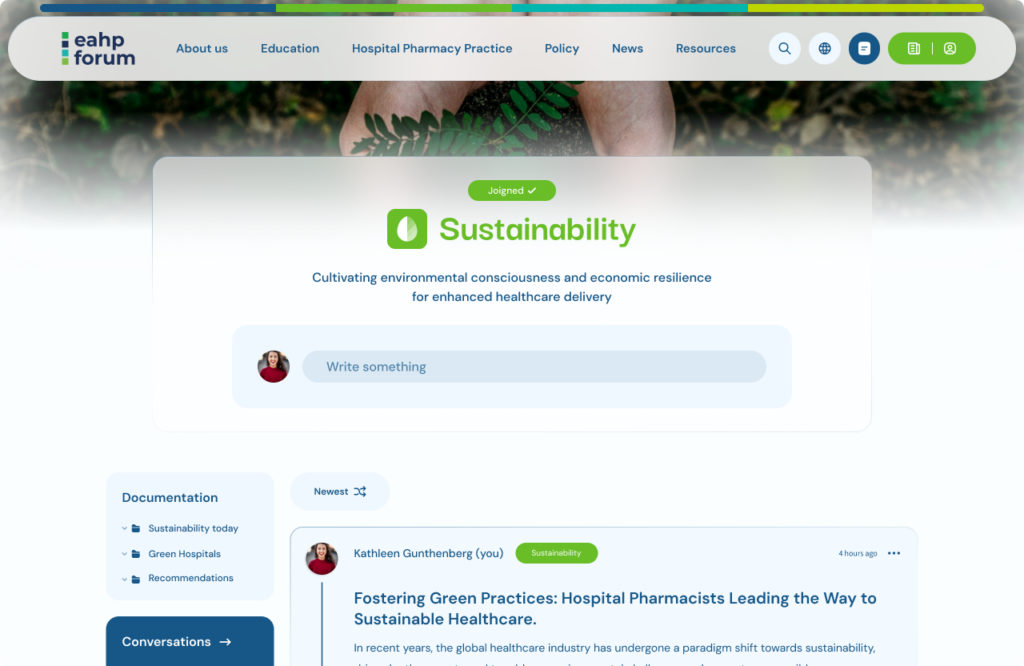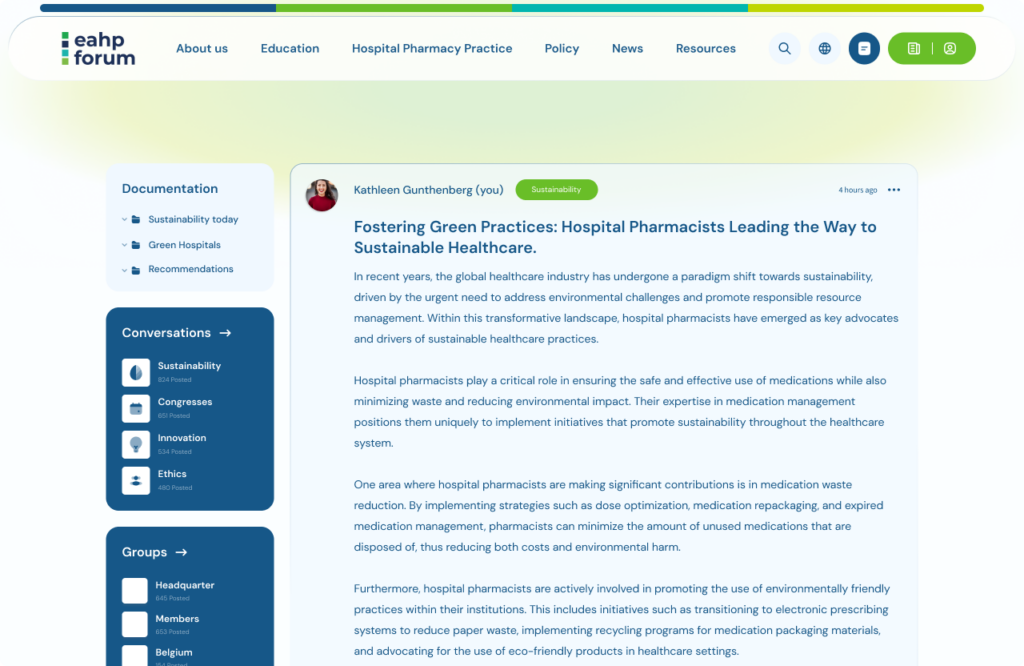 Healthcare workforce shortages are not a new phenomenon triggered by the COVID-19 pandemic. They were simply exacerbated by it. Shortages of nurses or physicians in hospitals, particularly in rural areas are frequently featured in news outlets across Europe. However, not only these professions are affected but also the pharmacy workforce, including pharmacists, technicians and others. Especially those working in hospitals have to cope with staffing which is insufficient to meet patients’ needs.
Healthcare workforce shortages are not a new phenomenon triggered by the COVID-19 pandemic. They were simply exacerbated by it. Shortages of nurses or physicians in hospitals, particularly in rural areas are frequently featured in news outlets across Europe. However, not only these professions are affected but also the pharmacy workforce, including pharmacists, technicians and others. Especially those working in hospitals have to cope with staffing which is insufficient to meet patients’ needs.
EAHP Position Paper on the Hospital Pharmacy Workforce
The World Health Organization (WHO) highlighted for its European region that countries are currently facing severe challenges related to their healthcare workforce that existed before the COVID-19 pandemic and that have been exacerbated by it. In addition to individuals leaving the healthcare professions due to increasing workloads and unmanageable staffing situations, the healthcare workforce is ageing. A demographic shift of a large section of the workforce into retirement age threatens to impact human resources in all European health professions. Response in the form of adequate workforce planning is urgently needed.
There is a growing need for highly educated and specialised hospital pharmacists in medication and medication-related processes that can ensure the seamless transfer of patients between healthcare settings. High-quality education in all European countries is of utmost importance for addressing the workforce problems of pharmacists to ensure that the profession remains an integral part of healthcare. Education needs to go hand in hand with hiring enough pharmacy personnel, including support staff, and training a sufficient number of students each year to robustly grow the pharmacy profession in each country.
It is clearly time to act for patients in all countries around Europe. Consequently, the Association has put forward actions that should be taken at the local and national levels, including short-term measures for improving pharmacy staffing and long-term plans for securing a resilient workforce. These should be taken into account by European governments, hospital administrations, healthcare professional organisations and other decision-makers, including the chambers of pharmacy, when addressing the grave shortcomings in planning and robustness for the pharmacy workforce.
Actual and future needs of the pharmacy workforce
Actions at the local level (pharmacists and their professional organisations, including the chamber of pharmacists)
- Promote the changing roles of pharmacists
- Emphasise the necessary cooperation between healthcare and social authorities, education
system and payers
- Showcase the profession to make it more attractive
- Cooperate with universities on working with students
Actions at the national level (authorities & universities)
- Train a sufficient number of students each year to robustly grow the pharmacy profession in each country
- Invest in both the profession and the pharmacy infrastructure
• use automation whenever possible and support the development of new IT
• technologies (artificial intelligence, machine learning) to help pharmaceutical teams in their decision-making
and enable them to focus on the activities that require the most pharmaceutical expertise
• promote task-shifting and changing roles of the pharmacy profession
Short-term measures for managing workload and improving pharmacy staffing and recovery
To maintain appropriate staffing levels, hospital administrations need to
- support the continuing education of pharmacists and pharmacy support staff that aims at task shifting and further implementing the changing roles of the pharmacy profession, and
- hire more supporting staff to ensure that the capacity of pharmacy personnel is used most efficiently.
In a labour market as interconnected as in Europe,
- invest in the free movement of the pharmacy workforce to support its flexibility, and
- increase attraction to the profession by setting clear career development plans and manageable workload, and improve (where needed) salaries and benefits which are paramount for the retention and recruitment of pharmacy staff.
Long-term plans for securing an adaptable, versatile and resilient workforce
Pharmacy workforce plans of European governments should
- continuously expand the training capacity for pharmacists and invest in undergraduate
education that provides basic professional knowledge in hospital pharmacy and ensures that pharmacists can acquire the required competencies in hospital pharmacy when entering the profession
- establish clear career development pathways for the entire pharmacy workforce, including well-developed specialisation systems
- increase the support for experience-based training and exchange within Europe
- adapt the curriculum to integrate the changing roles of the profession to match the evolvement of pharmacy roles over time.
EAHP’s Position Paper on the Hospital Pharmacy Workforce is available HERE
EAHP Investigation of the Hospital Pharmacy Profession in Europe
To address the problem of pharmacy workforce shortages, EAHP and its members started an in-depth analysis of the situation in Europe. A workshop conducted with delegates from the Association’s member countries in June 2022 was followed by an Investigation of the Hospital Pharmacy Profession in Europe that closed in the first quarter of 2023. Touching on the state-of-the-art of the profession and specifically on the European Statements of Hospital Pharmacy, the investigation collected information on their implementation, the size of the profession and other pharmacy-specific practice areas.
Find more information regarding the Investigation of the Hospital Pharmacy Profession in Europe HERE























 Healthcare workforce shortages are not a new phenomenon triggered by the COVID-19 pandemic. They were simply exacerbated by it. Shortages of nurses or physicians in hospitals, particularly in rural areas are frequently featured in news outlets across Europe. However, not only these professions are affected but also the pharmacy workforce, including pharmacists, technicians and others. Especially those working in hospitals have to cope with staffing which is insufficient to meet patients’ needs.
Healthcare workforce shortages are not a new phenomenon triggered by the COVID-19 pandemic. They were simply exacerbated by it. Shortages of nurses or physicians in hospitals, particularly in rural areas are frequently featured in news outlets across Europe. However, not only these professions are affected but also the pharmacy workforce, including pharmacists, technicians and others. Especially those working in hospitals have to cope with staffing which is insufficient to meet patients’ needs.

